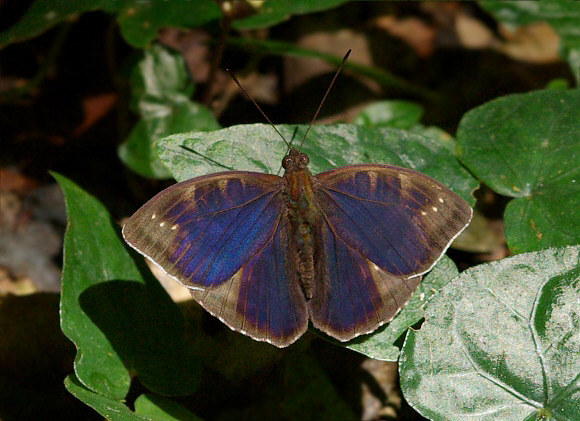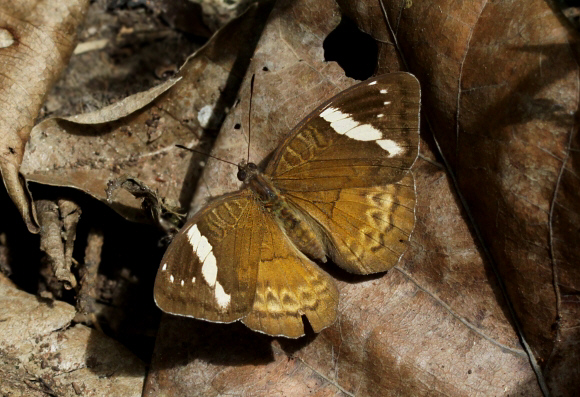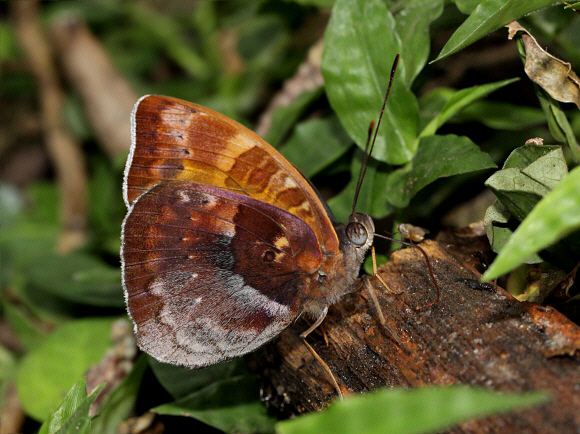
Introduction
There are about 70 Euriphene species, all of which are found in the forests of the Afrotropics.
Euriphene are similar in appearance to Bebearia but are generally smaller, and their hindwings are deeper and with a straighter costa. On the upperside the males of some species e.g. coerulea and aridatha are very dark, with a vague metallic steely-blue sheen. Others e.g. lysandra and gambiae have a reddish-brown ground colour. All Euriphene species have well defined dark bars in the cell of the forewings. Many also have a series of small white dots arranged in an arc at the apex.
Females of obtusangula, obani and gambiae have a Catuna-like pattern of brown and cream. Most other species including aridatha however have a reddish-brown ground colour, a dark apex, and a broken white or cream diagonal band across the forewings. Euriphene aridatha is distributed from Sierra Leone to Cameroon.

Habitats
This species is found in closed-canopy forest. It can survive in quite small fragments of good quality forest but is not usually found in secondary forest.

Lifecycle
The lifecycle of aridatha appears to be unknown but the following generalisations apply to the genus Euriphene: Several species are known to use Combretaceae as larval foodplants. The larvae have long multi-branched lateral spines. Pupation takes place at the end of a twig. Prior to pupation the larva spins a silk web on the twig and wets it with a noxious yellow fluid which deters ants.
Adult behaviour
Both sexes tend to be found along the narrower trails where sunlight filters through the canopy to ground level.

